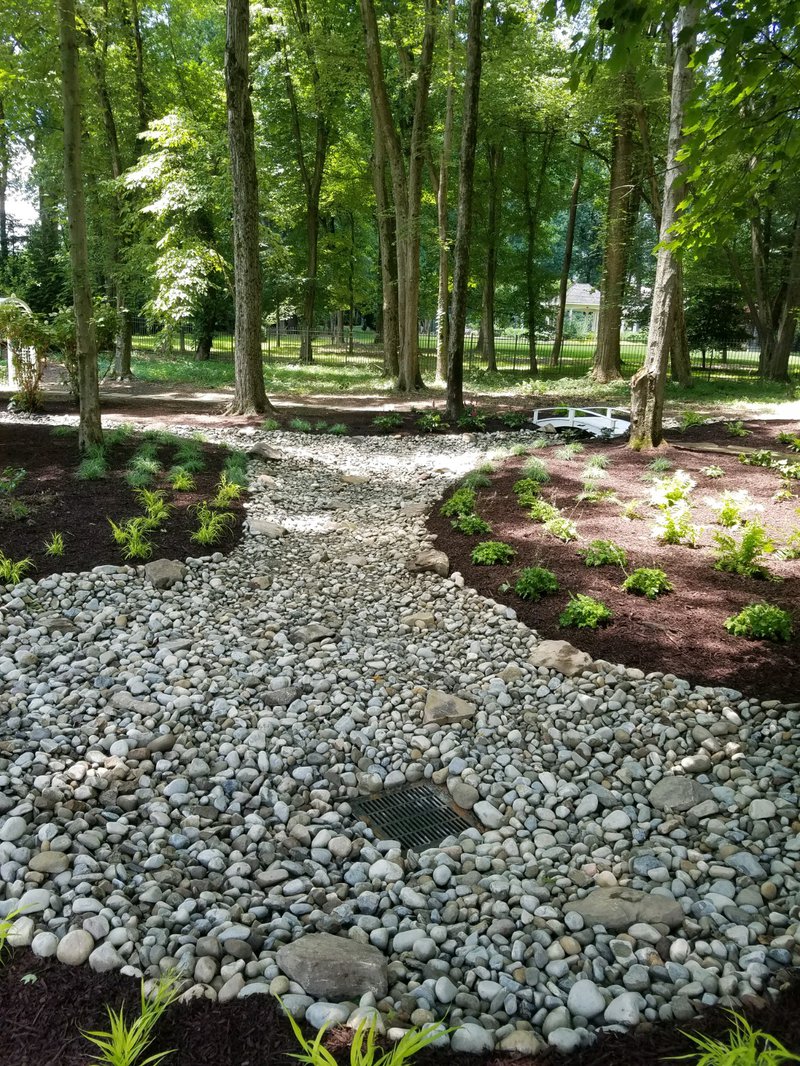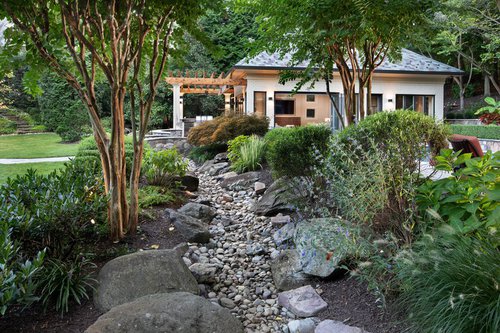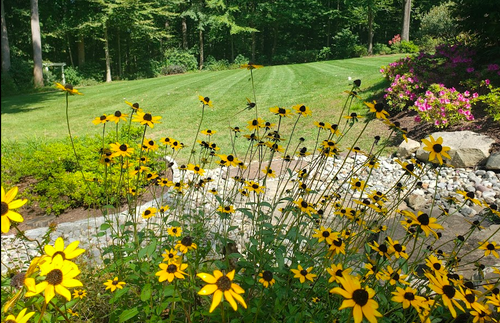
How a Rain Garden Could Solve Your Drainage Issues
Rain, rain, drain away...
Does your backyard feel more like a swamp in the spring than you’d like? Maybe you even become nervous about inviting anyone over, particularly during the rainy season. Not only is drainage an issue, but maybe you’re also worried about flood damage or excess mosquitoes.
But as you’re dreaming up a luxury backyard, finding drainage solutions might feel like the boring part. How can something that solves water woes actually be a part of a luxury space?
Enter your solution: a rain garden! Let’s talk about what a rain garden can do to solve your drainage problems and elevate the look of your space.

Try a natural solution
If you experience flooding in the lowest lying areas of your landscape, especially after rain, turn those wet spots into attractive rain gardens.
This natural fix to your water problems may be exactly what you’re looking for.
Rain gardens are made up of beds that use porous soil to grow plants that thrive in wetter environments. These versatile gardens can be as small or large as necessary.
To create a rain garden, a landscape designer starts with a man-made depression that is designed to collect rain runoff. The garden is then filled with gravel or small rocks, mulch and rain garden plants to slow and absorb excess water. It also removes pollutants in the water before it reaches a nearby storm drain.
You lose your drainage issues and gain improved water quality, a habitat for birds and butterflies and a low-maintenance, gorgeous addition to your landscape.

The best rain garden plants
You might think rain gardens require only wetland plants and that they may not be very attractive, but that’s far from the truth.
Rain gardens are designed to drain in 24 to 48 hours, so you don’t have to worry about mosquitoes. They also are designed to endure drought periods.
Therefore, rain garden plants typically include native plants that can tolerate both wet and dry soil.
A few stunners that typically do well as rain garden plants:
- Winterberry holly - This deciduous holly shrub that is native to the eastern U.S. produces bright red berries that persist through winter and into spring, attracting birds.
- Virginia sweetspire - This native evergreen shrub has graceful arching branches, and small, fragrant flowers in early summer that come in various colors, depending on the variety.
- Chokeberry - This shrub is part of the rose family, producing white flowers and gorgeous red autumn foliage.
- Viburnum - This deciduous shrub produces white flowers in late spring, adding some color and fragrance to your rain garden.
- Black-eyed Susan - A popular wildflower, this fast-growing rain garden plant has daisy-like flowers with large seed heads and yellow petals.
- Joe Pye weed - This late-blooming native perennial grows 4- to 10-feet tall with pale pinkish purple flowers that last from mid-summer through fall. Butterflies love it.
- Mountain mint - This native perennial has mint-like leaves that combine with clusters of white to lavender flowers. If you crush the leaves, they offer a spearmint scent.
Partner with a landscape pro
Rain gardens are great, natural solutions to capture rain flow in your landscape.
While rain gardens are fairly low maintenance once installed, they take intricate planning, building and design to truly work properly, providing all of the benefits they promise.
As you can see, rain gardens incorporate native plants, draw pollinators and filter water, providing your landscape with a sustainable solution to low-lying wet spots. And they are beautiful additions to boot. Our expert team of landscape professionals is here to help you dream up your ideal rain garden. We have extensive knowledge of installing and maintaining plants native to the Washington D.C. area, and we love doing it.
Learn more about gardens we’ve designed here or contact us for a consultation about adding a rain garden to your landscape.





